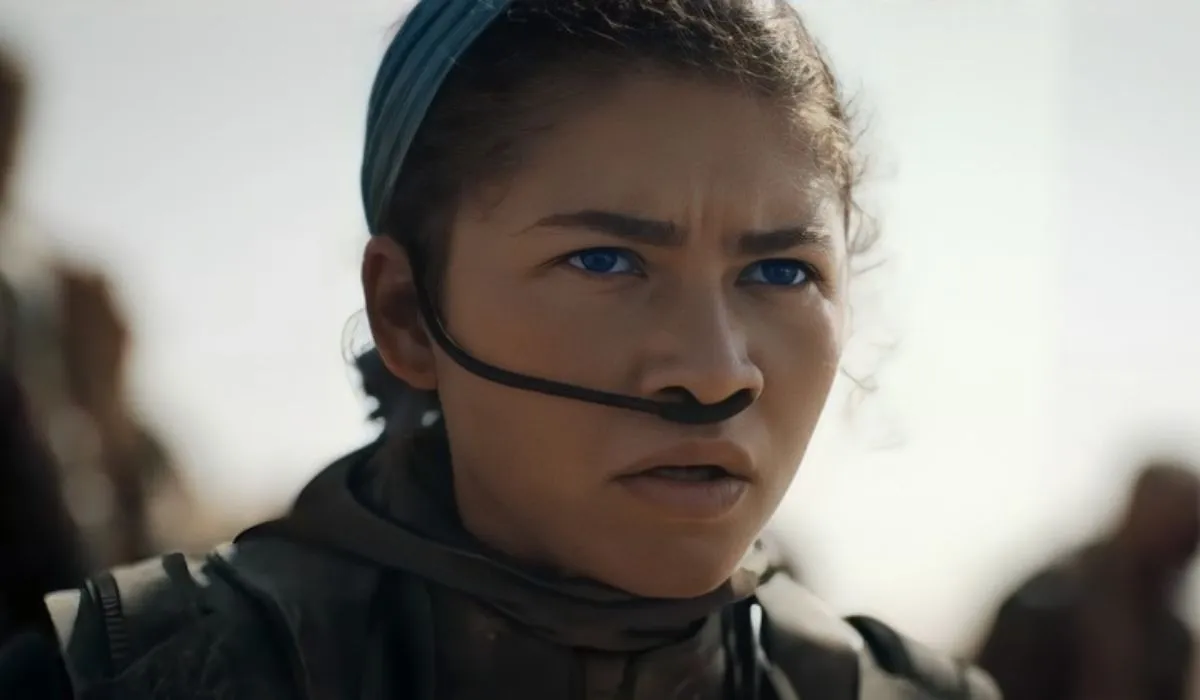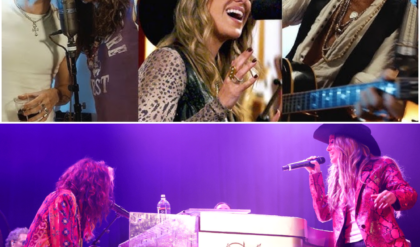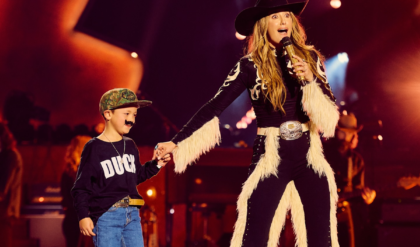We just love some good old visual symbolism.

I think it’s safe to say that one of the best characters in Dune: Part Two—a movie that is filled with them—is Zendaya’s Chani. After getting a very brief introduction to her in Dune: Part One, she really gets to shine in Dune: Part Two.
Chani is the true emotional heart of the movie, guiding us through the emotions that director Denis Villeneuve wants his story to express—we feel her determination and her love in the first half of the movie, as Timothée Chalamet’s Paul Atreides integrates within the Fremen community of Sietch Tabr. And then we hurt alongside her for Paul’s betrayal, when he breaks his promise to her and steps into the figure of the Lisan al-Gaib.
Zendaya was absolutely brilliant through it all, and sure, Chani deviates from how she was originally written by Frank Herbert in Dune, but I would argue that the end result is an even more compelling character than she already was.
Among the many details of Chani’s personality and character design, there’s one that has particularly stood out to me—the light blue headscarf that she wears in several scenes throughout the movie, especially during Paul’s first sandworm ride. It’s a rare color on Arrakis, even though it’s the color of the famed Eyes of Ibad of the Fremen People.
Still, Arrakis is a place of rich oranges and blinding beiges. Let’s not even mention Geidi Prime, the Harkonnen’s homeworld, which is lit by a literal black sun. The only sweeps of blue we saw were in the first movie, when the Atreides are preparing to leave their home planet of Caladan which unlike Dune has plenty of water on its surface, and in brief flashes of that world in Paul’s memories and visions in Part Two.

Caladan was a very blue-tinted planet, but ever since the Atreides left him it’s been a rare color to come by in the Dune movies (Warner Bros)
So catching sight of that scarf on Chani’s head really got me wondering about its purpose because there was no way professionals like Villeneuve and costume designer Jacqueline West would put anything on one of their characters without there being a deeper purpose to it. And a deeper purpose there is indeed—even though it’s not the one book readers might have expected.
In The Art and Soul of Dune: Part Two—a companion piece to the movie written by Tanya Lapointe, who had already worked on The Art and Soul of Dune when the first movie had come out—there’s the explanation behind Chani’s head accessory. Villeneuve explains that among the details he came up with is the fact that Fremen women wear blue when they fall in love.
“When Fremen women fall in love, they wear blue in the film.” ?? #DunePartTwo/ #DunePart2 pic.twitter.com/N2opMUXgM1
— Courtney Howard (@Lulamaybelle) March 2, 2024
The scarf on Chani’s head, which is so prominent when looking at her, is therefore a symbol of her love for Paul and also of their budding relationship. She wears it again when they’re in their stilltent, discussing whether or not they should follow Josh Brolin’s Gurney Halleck in checking out the Atreides’ atomic arsenal hidden away by Oscar Isaac’s Duke Leto. Chani has no reason not to trust Paul, who has promised her time and time again that he only wants to fight with the Fremen rather than become their messiah—and so the scarf stays on her head.
The scarf is also there during the final battle between the Fremen and the Emperor’s Sardaukar, but this time it’s wrapped around Chani’s right arm. Paul has already become the Lisan al-Gaib at this point, drinking the Water of Life and taking control of the Fremen mythos—something that Chani sorely and vocally disapproves of. Still, the blue scarf tells us that some of that love is still there.
And then when Paul demands and obtains the hand of Florence Pugh’s Princess Irulan and leads the Fremen off the planet to truly start the holy war in the name of Muad’Dib, Chani leaves the palace of Arrakeen and travels into the desert alone. Her last scene—which is also the movie’s closing scene—is her waiting for a sandworm to presumably ride as far away from the capital as she can. The scarf—and the love it represented—is completely gone. Truly the stuff they write visual symbolism textbooks about.
 No room for blue scarves with a look like that (Warner Bros)
No room for blue scarves with a look like that (Warner Bros)
Now, those who have read the book might have instead imagined that the scarf was going to mean something different. And if you don’t want to know what that is and want to stay spoiler-free either as you catch up with Herbert’s novel or in anticipation of a possible third movie, I suggest you stop reading now.
In Dune the book there are indeed mentions of a blue scarf—it’s called a “Nezhoni scarf” and it’s worn by Fremen women who have just given birth to a son. So at the first glimpse of it in the trailer, longtime Dune fans speculated that it would mean that we were going to see Chani give birth to her first child with Paul, little Leto II the Elder.
Now, Leto II sadly doesn’t survive before infancy since he’s killed in a Sardaukar raid, with some fans agreeing on Beast Rabban being the one to personally commit his murder—even though that doesn’t mean that there won’t be another Leto II with a monumental role to play in the history of the galaxy. But that’s all for another book, namely Children of Dune.
 Honestly, I have no trouble believing this guy would not have morals even when a baby was involved (Warner Bros)
Honestly, I have no trouble believing this guy would not have morals even when a baby was involved (Warner Bros)
Still, the change in meaning of the scarf makes sense in the context of the movie and that’s because the two Chanis, while similar, are not the same character. The impact of Villeneuve’s version of Chani would have been probably somewhat lessened by her becoming a mother before the end of the movie, what with her relationship with Paul not really getting underway until well into the first third of the story and her being generally suspicious of him and the prophecy that hangs around him.
(featured image: Warner Bros)





